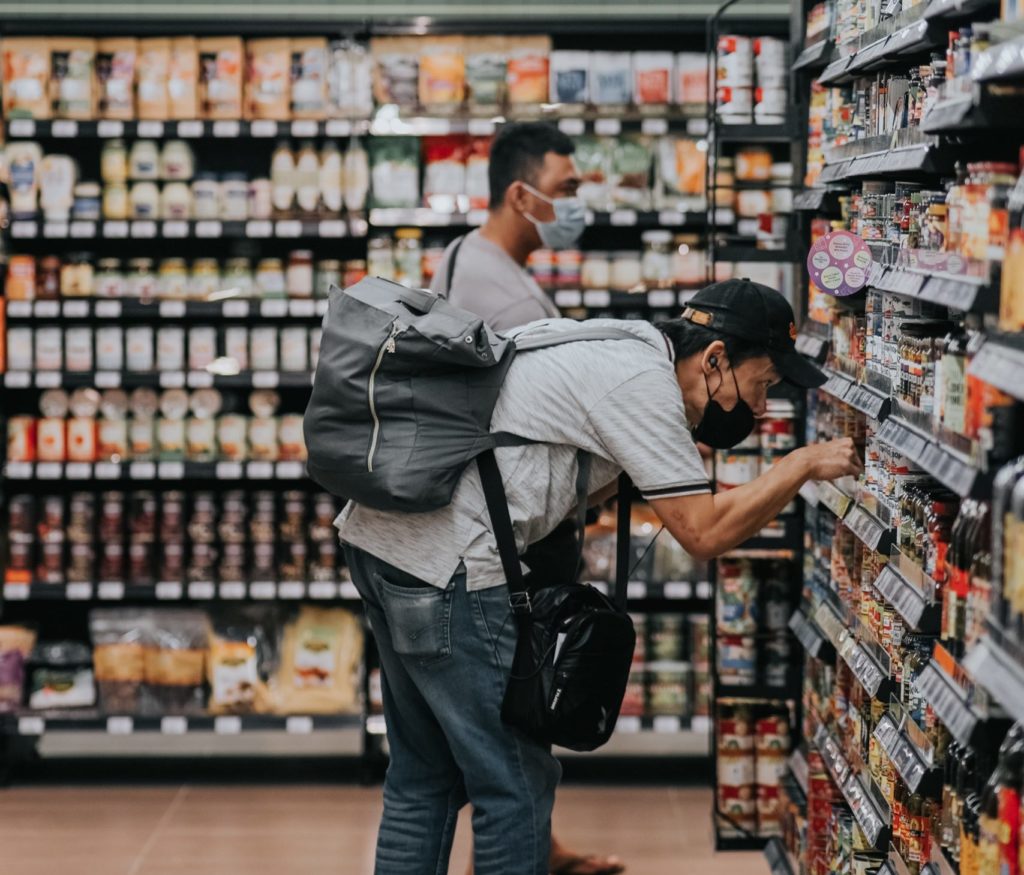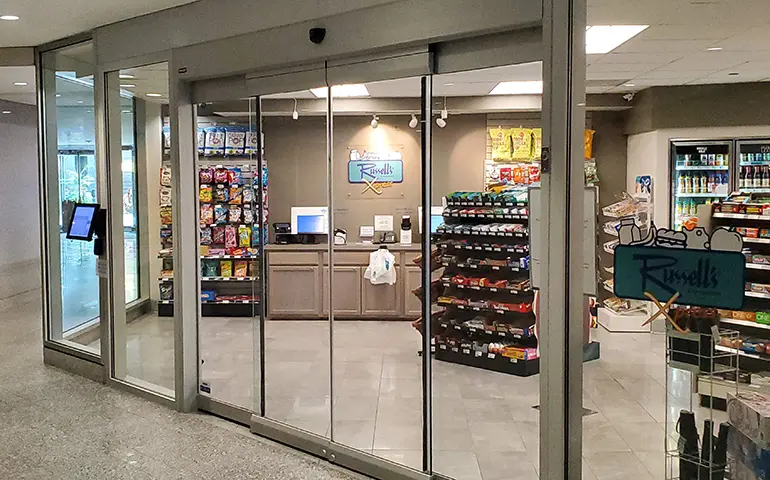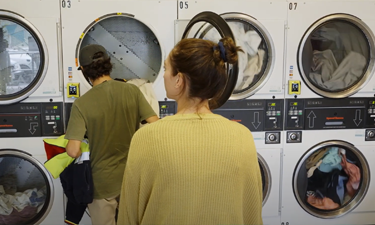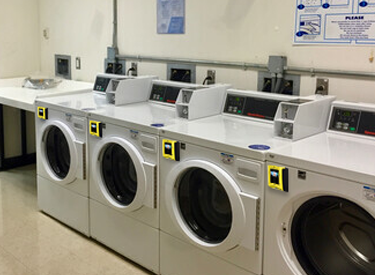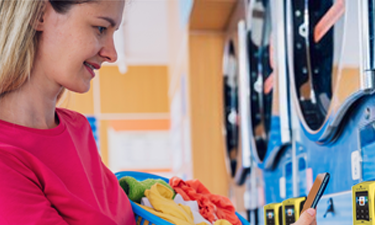Explained: What is unattended retail and how to take advantage of it
The pandemic has caused a dramatic shift in consumer habits across the globe. With these changing behaviors comes the opportunity for the retail industry not just to meet consumers where they are, but also to develop solutions that get buyers where they want to be.
In the new year, the keys that will spell success for retailers include incorporating a customer-first approach, offsetting inflationary pressures with technology, and assuring a frictionless shopping experience. As it turns out, tech-savvy merchants are already capitalizing on these strategies with the help of unattended retail.
What is unattended retail?
Unattended retail can roughly be defined as a sales transaction that takes place without any human interaction. Take vending machines, interactive kiosks, micro markets, or self-service stations for example – all of them are a part of the unattended retail environment.
Within the broader retail industry, experts like to describe unattended retail as the middle order. It sits somewhere between traditional brick-and-mortar shops, where a face-to-face interaction with the merchant or cashier is inevitable, and e-commerce platforms, where not only is there zero interaction with a sales representative but the customer cannot even view the product in person before buying it.
With this context in mind, unattended retail has emerged as the perfect solution for consumers who would like to reach a buying decision after looking at a product, while being able to complete the purchase without standing in line or waiting on slow-moving employees.
Since speed and convenience are the hallmarks of unattended retail, solutions such as self-service kiosks can be offered at a variety of places that customers frequent. These could include sites that are non-traditional in terms of retail but receive heavy foot traffic regularly, such as sports stadiums and train stations.
Furthermore, unattended retail solutions can also be offered in closed-loop environments. This means only a specific set of people would be able to access a unit by, let’s say, scanning an app or using a prepaid card. Such closed-loop solutions work well in settings with a large population of potential customers who return day-after-day, like offices, hospitals, universities, and gyms.
Ask us about our micro market solutions
How is unattended retail different from traditional vending?
Unattended retail takes simple vending solutions into a more technically-evolved landscape where the focus is on innovation. Powered by technologies such as cashless payment systems, the Internet of Things (IoT), and artificial intelligence/machine learning (AI/ML), unattended retail significantly expands the possibilities of what traditional vending can achieve.
In the ‘24×7 convenience store’ environment of micro markets and larger self-service unattended operations, for example, consumers can pick up freshly-prepared food and beverages, review them for nutrition information and other details, and leverage robust self-checkout options to complete the purchase.
But that’s not all. Even old-school vending machines can be instantly converted into a smart solution for unattended retail by retrofitting them with a plug-and-play device for cashless payments.
It’s worth highlighting that, primarily, cashless payment card readers are meant to offer customers more payment options than just coins or cash. However, leading unattended retail solution providers like Nayax leverage technology to integrate telemetry, machine monitoring and management, and real-time business intelligence into one device so that retailers can have 24×7 access to information on all aspects of the vending fleet including stock, cash monitoring, alerts, and reports.
And to think that it was only a few years ago that operators had to drive to each vending machine on a semi-daily basis to see what items needed to be replenished!
Other interesting features of smart vending solutions include voice interaction and built-in marketing tools that allow merchants to run campaigns, like discounts and happy hours, for a richer sales experience.
In the meantime, modern vending machine manufacturers are responding to the demands of unattended retail by incorporating advancements such as self-sanitizing technology and Amazon Alexa-style AI assistants into their offerings.
Amazon Go: A pioneer in ‘Just Walk Out’ shopping
No discussion on unattended retail can be complete without mentioning Amazon Go. It wasn’t until the first Amazon Go grocery store opened in Seattle in 2018 that cashierless retail technology started gaining traction among both big and small merchants.
The Amazon Go micro market concept allows customers to pick up whatever they need and simply walk out the door – skipping the checkout process entirely. Weight sensors, overhead cameras, and deep learning technology help to detect what items have been removed from the shelves. Accordingly, a receipt of the purchase is sent to the buyer through Amazon One or the Amazon shopping app.
Three years and 26 Amazon Go stores later, the pioneer in unattended retail has taken its high-tech offering a step ahead by collaborating with Starbucks and opening a unique store in New York City in November 2021.
This store is a combination of a Starbucks Pickup and Amazon Go since it blends the “order ahead” feature in the Starbucks app with Amazon Go’s “Just Walk Out” technology to create a frictionless retail experience.
Once the customer arrives at the store, they can find the status of their order on a digital screen, and then pick up the order directly from a Starbucks barista. Meanwhile, if they want to shop, anything they take off the shelf is automatically added to their virtual cart. When they’re done shopping, they can either sit in the lounge area to enjoy the beverage and food item selected from the Amazon Go market, or continue on their way. Once they leave the store, their credit card is charged.
Starbucks and Amazon Go plan to open additional stores in 2022.
Brick-and-mortar merchants tap into unattended retail
This idea of walking into a brick-and-mortar store, picking something up off the shelf, paying for it with a tap, and walking out without ever interacting with a store employee would have seemed far-fetched a few years ago. Today, it has become a reality in numerous stores across the globe.
More specifically, self-checkout or self-service checkouts are quickly becoming the norm in supermarkets and chain retailers, including UK’s Tesco, Morrison, and Sainsbury; Germany’s Aldi Nord; and Israel’s Shufersal.
At the same time, quick-service restaurants such as McDonald’s and Taco Bell have also become proponents of the self-serve kiosk movement — and not without reason. As these companies have discovered, when customers get the opportunity to browse the menu for a little bit longer, they feel less pressure, and ultimately end up spending more.
Perhaps that’s why other sectors such as fashion and homeware are also trialing unattended retail technology in their stores. Rent the Runway, for example, has deployed a barcode scanning-enabled interactive kiosk at its flagship store in San Francisco to let the members of its subscription service return clothing items and borrow new ones without waiting for staff to assist them.
More recently, a minor league baseball stadium in Massachusetts retrofitted its convenience/memorabilia shop with AI and cloud connectivity to allow fans to shop for their favorite snacks and souvenirs without having to wait in line or stop at a checkout station. Even fuel/convenience retailer BP has begun retrofitting select outlets across its network to provide a cashierless shopping experience to customers.
The many advantages of unattended retail for consumers
As more and more consumers crave instant gratification, their expectation for faster, easier, and stress-free shopping has increased exponentially. Cashless unattended retail technology specializes in delivering just that.
Research reveals that about 80% of in-store shoppers want to try non-traditional checkout options such as self-service because of their speed. The study further states that consumers who prefer a self-managed checkout over traditional checkout options do so because of a better buying experience and increased efficiency.
But, to truly gauge consumer interest in non-traditional, cashless retail, you may only look as far as this recent survey that finds that 51% of UK consumers would be willing to make payments using a chip implanted in their hand – provided it met certain safety and privacy protection criteria.
Additionally, an overwhelming majority of the respondents (83%) were excited about the idea of “feeling like they are in a sci-fi movie”, while nearly half (48%) felt the microchip implant would be useful if they were caught without cash or card.
The futuristic appeal of unattended retail has more than 54% of respondents in a separate poll convinced that Amazon Go and similar tech-powered stores will be a success as the world becomes increasingly digital.
Ask us about our unattended retail solutions
The many advantages of unattended retail for merchants
The appeal of unattended retail transcends beyond the consumer segment. Merchants who invest in unattended retail solutions are known to witness several revenue-boosting benefits, including the ability to attract customers from higher-income groups.
A cashierless solution also allows retailers to minimize costs by optimizing staff allocation in a market that is plagued by a labor shortage. Relocating employees to higher-value activities or those that require human intervention can unlock more opportunities to increase cash flow.
In addition, there are fewer chances of employee error and shrinkage in unattended retail spaces because merchants have access to real-time inventory tracking.
Furthermore, when customers enrolled in loyalty programs permit retailers to acquire data about their preferences and purchases, the shopping experience can be personalized with dynamic, specific offers. This is why consumer analytics is hailed as one of the key enablers in the transition from vending to unattended retail.
And, let’s not forget that only a handful of businesses can afford to rent retail space in prime shopping locations, whereas unattended retail solutions can even be set up at non-traditional sites with high foot traffic, ultimately increasing the reach of the brand.
The impact of the pandemic on unattended retail
As unattended retail grows in popularity, part of the credit for its quick adoption needs to be attributed to the ongoing pandemic. While standing in the checkout line used to be an annoyance, with COVID-19, it also became a health risk.
With nearly 98% of US grocery sales typically taking place in the stores before the pandemic, safety-minded customers started showing a willingness to download retail apps, try out services like curbside pickup, and minimize interactions with cashiers or other customers.
Since people of all ages started paying more attention to hand hygiene and the surfaces they touched, COVID-19 also marked the beginning of a cashless revolution across the world. ATM withdrawals fell dramatically in several countries, while thousands of vendors added a cashless payment system to allow consumers to make purchases with the tap of a card or by quickly scanning a QR code.
In such an environment, contactless unattended retail options like smart vending machines and micro markets are considered “safer” than traditional in-store purchases. Customers also appreciate that many vending products come pre-packaged to ensure hygiene.
This is why, in a recent survey, nearly half of consumers who increased usage in unattended retail during the pandemic cited speed (49%), social distancing (49%), and convenience (47%) as reasons for change.
The rise of micro markets
Micro markets are unattended retail environments that sit at the intersection between labor-saving point of sale (POS) devices and self-service dining and retail spaces. Micro markets ditch closed kiosks in favor of temperature-controlled open shelves, reach-in coolers, and glass door freezers.
Just like the Amazon Go concept, consumers are free to pick up the freshly-prepared food and beverage products, review them for nutrition information and other details, and leverage robust self-checkout options to complete the purchase. Usually, cashless payment options such as credit cards, mobile wallets, and prepaid cards are used when shopping in a micro market.
With social distancing becoming a part of daily life, and stores limiting both the number of employees and customers in their premises, unattended micro markets have begun to mushroom at corporate parks and residential complexes alike.
While, on one hand, these retail environments give consumers access to all essentials on-site, on the other hand, micro markets allow operators greater flexibility in pivoting and supplying top-quality products to buyers at a moment’s notice.
In the future, non-traditional products and services could also be made available via micro market vending. Including, for example, teleshopping products or flowers and plants to cater to the burgeoning trend of ‘plant parenthood’ among millennials.
Ask us about our micro market solutions
Gen Z and millennials drive the future of unattended retail
According to a recent US-based study that polled more than 2,300 consumers, Gen Z shoppers are most likely to seek out unattended retail options because they want to take their time while shopping without interacting with the store staff.
The survey report highlights that 41% of Gen Z shoppers prefer not to engage in conversation during the checkout process, followed by millennials at 38%.
Quiz them about their interest in purchasing non-traditional vending products through kiosks, and Gen Z respondents say they would like to use vending machines to buy health products (79%), beauty products (61.9%), clothes and accessories (59%), books (47.8%), and magazines (32.2%).
Millennials, meanwhile, are the least likely to use vending machines to buy health products, but they are the most likely to use machines to purchase clothing and beauty products.
It’s little wonder then, that in a separate poll, about 30% of Gen Z-ers and 35% of millennials expressed that Amazon Go-type stores will be a success.
The role of mobile devices
The role of mobile devices in unattended retail cannot be emphasized enough. Smartphones have the power to transform static product vending into a dynamic retail experience.
Mobile devices are home to payment apps, virtual credit cards, and stored value. They are the gateway to loyalty and rewards programs, and make social vending and gifting possible. Customers can use their smartphones to check the locations of vending machines or micro markets and make a product selection.
Even in traditional stores, customers eager to skip checkout lines use their mobile devices to access smart shopping carts and apps that allow them to check prices, find items, and see in-store inventory. Access to discount coupons and other deals is another important device-enabled capability that shoppers appreciate.
It’s worth highlighting that some retailers offer buyers the ability to check out their virtual cart at their convenience, which helps to improve the overall customer experience.
Other capabilities that mobile devices enable include access to shopping lists, ordering unavailable products in-store, reviewing product information, and checking product recommendations, reviews, and ratings.
Unattended retail in small towns
With unattended retail’s high-tech approach, it’s easy to think that such a model could flourish in metropolitan areas only. But a couple of unattended, 24×7 grocery stores in small towns in Minnesota prove otherwise.
Main Street Market in Evansville is a members-only store, charging an annual fee of $75. Accessible through a mobile app or key fob, the store asks customers to use its app for payments, or make use of the in-store self-checkout machine.
To make the store less costly to operate, shoppers are required to scan the items themselves, while security cameras discourage theft. However, the business mostly relies on the honor system, taking a cue from New Prague’s Farmhouse Market, another 24-hour grocer.
Farmhouse’s annual membership costs $99 a year and gives more than 200 pre-approved shoppers access to a special key card that can be used to gather the products and pay for them via a self-checkout counter.
To bring down costs further, even suppliers get their own key cards and can independently restock products. This store also has just a camera in the name of security but hasn’t come across any incident of shoplifting yet.
Barriers to adoption
Unattended retail may be ready to transform the shopping landscape but not everyone has jumped on the bandwagon – yet.
As researchers have discovered, consumers who have purposely chosen not to use unattended retail technology have a range of complaints about the way self-service checkout options at their favorite stores work.
There are some (33%) who simply “do not like” self-service checkout. But for others, the issues pertain more to customer experience or digital user experience. For example, 23% of shoppers find self-service inconvenient to use for fresh produce. Users with more than 10 items in their carts also express similar difficulties.
Meanwhile, in another survey, lack of assistance (37%) and leaving the store without knowing the amount charged (19%) have been cited as the top two concerns of unattended retail.
Experts contend that many of these issues can be solved by refining the way self-service options are presented and managed from a technical and user experience point-of-view. Retailers can improve consumer adoption rates through user-friendly software, a simple onboarding process for customers at the POS, or improved access to self-service options.
Future trends in unattended retail
In any case, the future of unattended retail certainly looks bright with many innovations taking place in the sector.
Driven by customer demand, solution providers are now adding capabilities to machines to allow a customer to reserve a product in a specific unit by ordering it through a mobile app, scanning the QR code, and collecting it directly.
Unattended machines are also increasingly being equipped with technologies like facial recognition and augmented reality to help customers visualize how a product would look on them before they buy it.
Interestingly, many organic farmers and small business owners are looking at smart vending machines and micro markets to make their products available to buyers directly without setting up a stall in a marketplace or involving a middleman.
Another trend that experts believe could soon become mainstream in unattended retail is that of location-based marketing. So, if a consumer is in the vicinity of a cashless vending machine or micro market, they could be alerted of a special deal or offer through a message or app notification.
Looking ahead
As we sum up, one thing is quite clear – disruption in the form of unattended retail is just around the corner and traditional merchants have a massive opportunity to jump on the bandwagon, beginning with offering contactless payments to their customers.
In the long term, it will become common to see every merchant with an unattended retail arm as part of its offering to consumers, whether in the form of Amazon Go-style micro markets or through smart vending machines and self-service kiosks.
Find out how Nayax can help you navigate this new territory by contacting us here.







